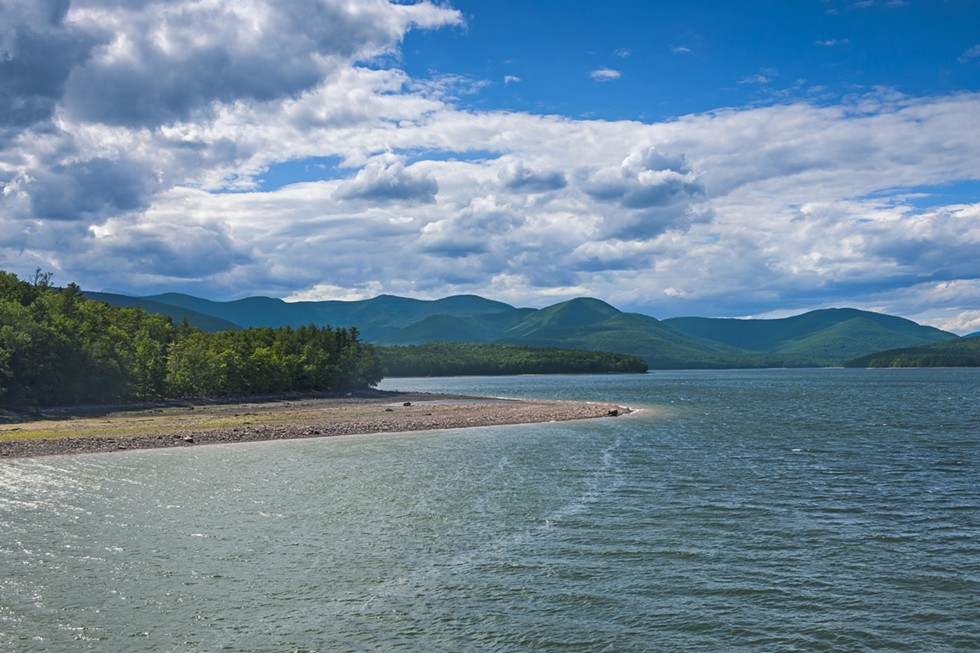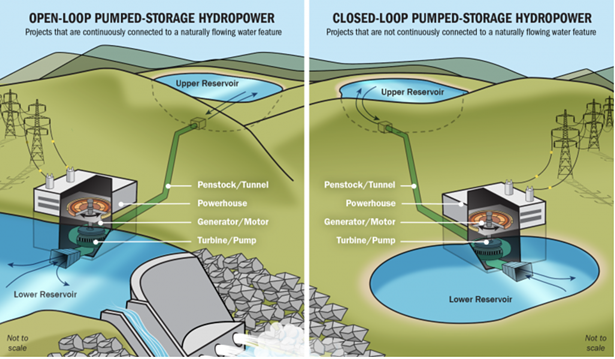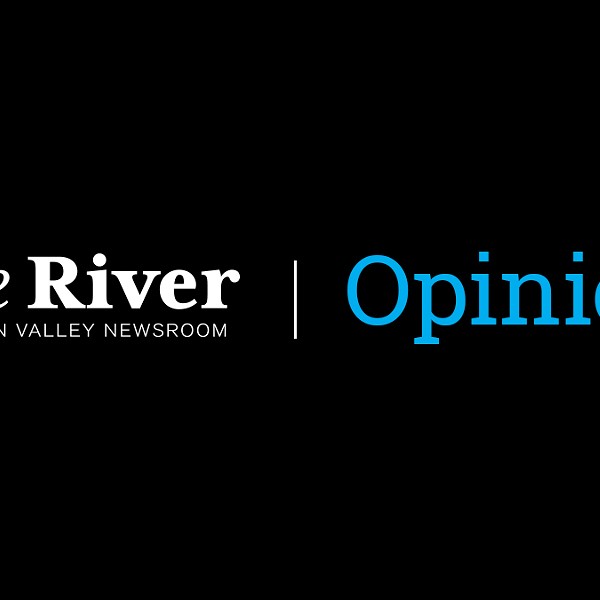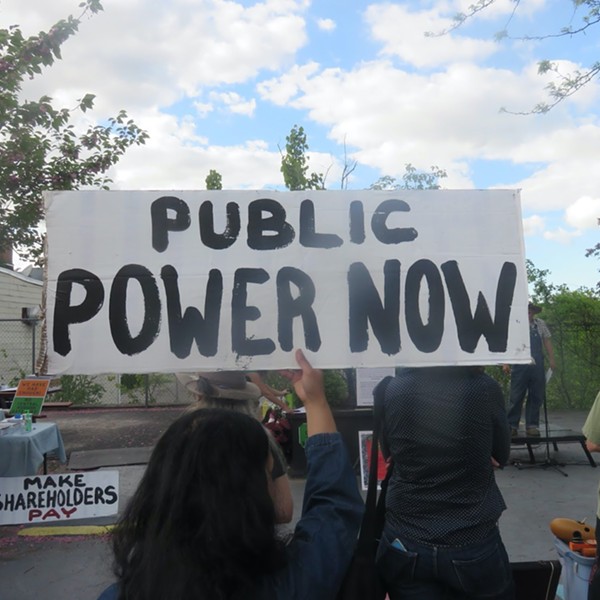Update April 13: In a letter to the Federal Energy Regulatory Commission dated April 12, Premium Energy requested to withdraw its preliminary permit application for the Ashokan Pumped Storage Project, “mainly due to the social impact the proposed project reservoirs would cause.” Victor Rojas, managing director of Premium Energy, wrote that the company may file a new application for a pumped storage project “once a more suitable project location is identified.”
Premium Energy Holdings is clearly in over its head.
In February, the little California energy company startled the Ashokan’s stewards and neighbors by revealing plans to build a massive pumped-storage plant to harness the reservoir and its watershed for hydroelectric power. Premium Energy’s proposal calls for a tunnel that would shunt the waters of New York City’s Ashokan Reservoir uphill to a new concrete reservoir it plans to dig. From there, the water would be held until times of high electricity demand, when it would be released to flow back downhill and turn the turbines at a new underground power station on the Ashokan, generating 800 megawatts of hydropower on the cheap.
The plan proposes three potential sites for the upper reservoir: Stony Clove, in the hamlet of Lanesville; Woodland Valley Road, in Phoenicia; and Maltby Hollow Brook, in the town of Olive. All three locations are populated areas within the Catskill Forest Preserve, and would require seizing land via eminent domain. None of the communities who would be affected were notified.
In just two months, the Ashokan Pumped Storage Project has managed to outrage just about everyone it threatens to touch: local politicians both right and left, environmentalists, county and school administrators, and ordinary woods-dwellers whose homes lie under blue water on Premium Energy’s speculative topo maps.
“The application itself has already caused great stress and alarm in the community,” Town of Olive Supervisor Jim Sofranko, a leading opposition voice, wrote in a letter to the Federal Energy Regulatory Commission (FERC). “The issuance of a permit will only compound that stress, adversely affect property values, disrupt the future plans of residents and businesses, cause economic hardship, and tax the limited resources of local towns, counties, and non-government agencies.”
Opponents to the Ashokan power project have formed an impressive coalition, working swiftly and with purpose. So far, more than 600 comments and motions to intervene have been filed by project opponents with FERC, with the deadline for submitting comments coming Monday. In addition to noting that the project would flood protected land and impact local ecology and tourism, many critics have pointed out factual flaws with the proposal: For example, Premium Energy’s application appears to place Lanesville in Ulster County—it’s in Greene County—and it calls its project “closed-loop.” Closed-loop projects are not connected to a continuously flowing natural water source, and are considered to have smaller environmental impacts. But projects where an upper reservoir is added to an existing lower reservoir are known as “add-on” projects, according to the Department of Energy.
Premium Energy has also awakened the wrath of the most powerful force in the Catskill mountains: The New York City Department of Environmental Protection. On Thursday, the DEP submitted its comments in the form of a 27-page evisceration of Premium Energy’s plans, its engineering, its apparent ignorance of the local ecological and political landscape, and its general audacity.
For a regulatory filing, it’s a rather spicy document, written in a tone that, despite the customary legalese, manages to convey a fair amount of shade. “It does not appear that Premium Energy has ever developed or operated any hydropower projects, and it is unclear whether it has the financial resources to address any problems it creates,” the DEP writes.
According to filings on its website, Premium Energy has proposals for at least four other pumped storage projects, but it’s unclear if it has ever developed or operated one.
“It is very clear that Premium Energy developed this proposal without any input from, or true knowledge of, our region,” said Democratic State Senator Michelle Hinchey in a press conference Thursday, joined by her Republican colleague Peter Oberacker and a host of environmental groups.
Same As It Ever Was
History in the watershed has a way of repeating itself. In 1987, after 10 years of pitched battle, the New York Power Authority backed off from plans to build a similar pumped storage project in Prattsville, using water pumped uphill from the Schoharie Reservoir. Local environmental groups that had been fighting the project for years—many of which are now engaged in the Ashokan opposition—were elated. Like the Ashokan project now on the table, the Prattsville pumped storage project threatened to stir up turbidity, potentially muddying the reservoir and damaging the ecology of the creek below.
It’s been 34 years, and since then, the landscape of the New York City watershed has only become more complicated.
New York City is one of just a handful of US cities legally allowed to operate an unfiltered water supply. It’s a privilege granted by the federal Environmental Protection Agency, and one the city is perpetually at risk of losing. New York City’s first Filtration Avoidance Determination, or FAD, was granted by the EPA in 1993. Every 10 years, the city must get a new FAD, a process that involves close study of its water protection efforts, fraught negotiations with local and state governments, and intense scrutiny from the state Department of Health as well as the EPA.
This time around, it might not take a decade to put a halt to a reservoir power project. New York City’s FAD is now worth at least $10 billion—the estimated cost to build and maintain a plant large enough to filter drinking water for 9 million people—and federal regulators are likely to take a dim view of any project that threatens to destroy the city’s carefully tended investment.
Then there’s the matter of mud: a drinking water problem for the city, and an environmental nuisance for its upstate neighbors. The city DEP has come under fire locally for releasing turbid water from the Ashokan into the lower Esopus Creek after large storms, and is currently awaiting a decision from the New York State Department of Environmental Conservation about its use of the waterway. The DEP claims it doesn’t have a good alternative to releasing muddy water after storms of a certain size; creek protectors and landowners who are tired of living with brown water disagree. But one thing seems clear: The city can predict in advance when the mud will flow, and take steps to avoid turbid releases. The DEP controls and monitors the whole system, constantly sensing and measuring, from mountaintop snowpacks to the depths of the reservoir. If Premium Energy were to start moving water around in the system in ways city engineers can’t monitor or control, turbidity in the reservoir would become both more frequent and more unpredictable, causing problems for both the DEP and its downstream neighbors.
Even if it weren’t for delicate watershed systems (and politics), it’s an open question whether Premium Energy Holdings has the chops to get the project built. The New York Power Authority is a hoary public power utility founded by Franklin D. Roosevelt in 1931. Premium Energy is a handful of engineers working out of a suburban strip mall in California, hoping to attract the attention of investors eager to cash in on New York State’s renewable energy boom.
Not My Beautiful House
Wendy Wolfenson was having her morning coffee one morning last month when she learned about the project via a story in the Daily Freeman. Wolfenson, who lives in West Shokan, soon realized that she had a personal stake in the project’s outcome: She lives about a half-mile downstream from one of the proposed upper reservoir sites, and the home of her close friend, Michelle Friedel, would be flooded entirely.
The taking of homes by eminent domain is a wrenching prospect anywhere, but in the New York City watershed, it has deep emotional resonance. The reservoirs were built by taking entire towns and communities through eminent domain, some in living memory, and the pain of history is still felt in the community.
“You have that moment of, ‘gulp, we gotta do something,’” Wolfenson says. She and Friedel started by going to the Olive town board and asking for help. Then the two women, with the assistance of Wolfenson’s husband, who’s an engineer, created community maps showing how the proposal would impact the homes and properties of their neighbors in West Shokan. That weekend, the two women went door to door, taping up information about the proposal at more than 125 houses in the area.
“When you talk about grassroots,” Wolfenson says, “it doesn’t get grassier than that.”
Meanwhile, the Phoenicia Library and the town of Olive each hosted a presentation about the proposal by Ginger Strand, a journalist who has written extensively about hydroelectric power. Both were attended by well over a hundred people. It was clear that local opposition ran deep, and Wolfenson and Friedel wanted to harness its energy. They set a Zoom organizing meeting for March 20, hoping at least a dozen people would attend. Instead, nearly 150 people signed on. The attendees separated into committee working groups, formulated strategy, and agreed to continue working together. Thus was born the Coalition to Save Catskills Preserve.
“Three weeks ago, we were all strangers to one another, and we come from different walks of life and different areas that are impacted,” Wolfenson says. “But we’ve worked so well together. We’ve become fast friends, and I think that we’ve made lifelong connections by virtue of our passion and our work on stopping this project.”
The Coalition mobilized a media outreach effort, and quickly built a website with detailed maps and other information about the proposal, talking points for opponents, and instructions for submitting comments to FERC. The group has stood alongside a wide range of environmental organizations, sportsmens’ associations, and other entities in opposition to Premium Energy’s proposal. That list includes the Sierra Club’s Atlantic chapter, the Catskill Center for Conservation and Development, Riverkeeper, Catskill Mountainkeeper, Trout Unlimited, the Woodstock Land Conservancy, and Onteora Central School District. “We’re spanning a wide variety of interests and points of view, and we’re all united,” Wolfenson says. “I think that really speaks to how strong and wide a coalition this really is, and how much opposition there is.”
They have an ally in New York City. In the Catskills, local business owners and land developers often take a dim view of the DEP’s constant vigilance over water quality. Land use and septic system regulations in the watershed can be prohibitively expensive to comply with, and there is plenty of grumbling about “the city” as an anti-development force in the rural Catskills. But for locals organizing against unwanted development, the city can be a powerful ally—and so far, it seems this project has few local friends, if any.
Water Flowing Underground
Holding 550 billion gallons of water, tantalizingly elevated hundreds of feet above sea level, the city’s reservoirs may seem ripe for power development and a way for the state to meet its ambitious goal of 70 percent renewable energy by 2030.
As the state shifts more of its power to renewables, energy storage becomes a bigger issue. The sun doesn’t always shine and the wind doesn’t always blow, of course. A 2016 Hydropower Vision Report from the US Department of Energy states that “significant potential exists for new pumped storage hydropower to meet grid flexibility needs and support increased integration of variable generation resources, such as wind and solar.”
It’s also a growth market for utility companies. The US energy storage market was worth more than a billion dollars as of last year, and pumped storage accounts for 95 percent of all utility-scale energy storage in the country, according to the Department of Energy. The American Energy Innovation Act, passed in December, includes a research-and-development program to invest in energy storage innovation, including pumped hydroelectric storage, and a grants program for demo projects.
Pumped hydroelectric is a clean solution to the problem of energy storage. By pumping water up during times of low electricity use and releasing it during high-demand periods, it’s a form of energy arbitrage, spending “cheap” power to make “expensive” power, as Strand puts it, and preventing that demand from being met by fossil fuel sources. But it’s not without issues: pumping water uphill requires more power than running it downhill generates, so pumped hydroelectric is a net consumer of energy. It’s also expensive and destructive to build.
For decades, the only operator who has successfully managed to turn a turbine with New York City water is the city itself—and the hydropower it generates comes from water that is already being released into streams below, not ambitious new construction projects. The city DEP currently operates four power plants in its reservoir system, and is in the (very long) process of building a fifth.
On Monday, FERC will close the comment period for Premium Energy’s application, and consider whether to grant a preliminary permit. If granted, that permit would not allow the company to move so much as a shovelful of dirt—rather, it would merely establish that Premium Energy is first in line to develop the project, if it is to be built at all. In effect, it’s calling dibs.
In order to get a permit to actually develop the site, Premium Energy will have to do rigorous site study and planning, and prove to FERC that it can address any impacts the project will have on local stakeholders. In its comments, the DEP argues that Premium Energy cannot do either site study or development without its permission, and the city has no intention of granting the company the necessary property rights.
“While possessing such rights is ordinarily not a requirement for an applicant to receive a preliminary permit,” the agency writes, “the City respectfully submits that this is not an ordinary project.”


















